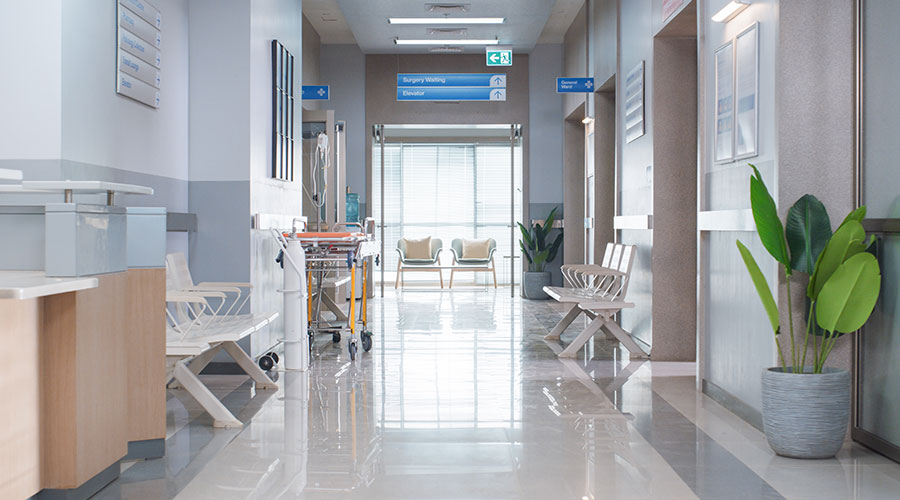Researchers from UCSF Benioff Children's Hospital Oakland in Oakland, CA, presented new data demonstrating the efficacy of the Clorox Healthcare® Optimum-UV® System at IDWeek 2018™.
That study showed that use of the Clorox Healthcare® Optimum-UV® System as an adjunct to standard terminal cleaning in patient rooms at UCSF Benioff Children's Hospital Oakland reduced levels of environmental pathogens recovered from high-touch surfaces by 94.5 percent, from 116.6 colony forming units (CFU) before cleaning, to 6.37 CFU following standard terminal cleaning and treatment with the Optimum-UV® System.1
During the study, single occupancy patient rooms were tested for pathogens upon patient discharge at three points in time: before they were cleaned, after standard terminal cleaning and after the Clorox Healthcare® Optimum-UV® System was deployed for one or two five-minute cycles as an adjunct to standard terminal cleaning. Surface swabs were collected from the same high-touch surfaces – the call button, telemetry monitor, door handle, toilet flush handle, faucet, bed rail, phone, keyboard pad and mouse, side table, dresser and light switch – at each of the three stages and total colony count was reported from each of the surfaces swabbed.
The mean total colony count prior to cleaning the room was 116.6 colony forming units (CFU). Standard terminal cleaning lowered contamination levels to 29.06 CFU and the addition of the Clorox Healthcare® Optimum-UV® System as an adjunct reduced environmental pathogen counts to 6.37 CFU.
The research team of Prachi Singh, D.O., Amanda Lucas, MS, RN, CIC and Monica Nayakwadi Singer, MD, MPH, from UCSF Benioff Children's Hospital Oakland, Oakland, CA, presented the findings as a poster abstract on October 5, 2018 at the IDWeek 2018™ conference in San Francisco.
“Pediatric patients with medically complex conditions are at especially high risk of contracting infections and environmental contamination plays an important role in the transmission of healthcare-associated infections,” said Dr. Singh. “The results of our research builds on previous studies demonstrating the efficacy of this technology for pathogen reduction and confirms that it can play a role in making healthcare facilities safer for vulnerable pediatric patients.”
Automated systems that use UV-C, the highest-energy form of ultraviolet light, to kill pathogens by inactivating their DNA, provide an extra layer of protection and are used to reach areas of the healthcare environment that may otherwise be missed or insufficiently addressed due to human error. "UV-C disinfection technology is a highly effective, efficient and safe way to reduce contamination and enhance terminal cleaning, for an even cleaner, safer healthcare environment," said Dr. Singer.
For more information, visit: https://www.cloroxprofessional.com/products/clorox-healthcare-optimum-uv-enlight-system/at-a-glance/ and www.idweek.org.
 Designing Healthcare Facilities for Pediatric and Geriatric Populations
Designing Healthcare Facilities for Pediatric and Geriatric Populations Kaiser Permanente Announces New Hospital Tower at Sunnyside Medical Center
Kaiser Permanente Announces New Hospital Tower at Sunnyside Medical Center Building Disaster Resilience Through Collaboration
Building Disaster Resilience Through Collaboration Amae Health Expands to New York City
Amae Health Expands to New York City Hospital for Special Surgery Opens Two New Facilities in New Jersey
Hospital for Special Surgery Opens Two New Facilities in New Jersey